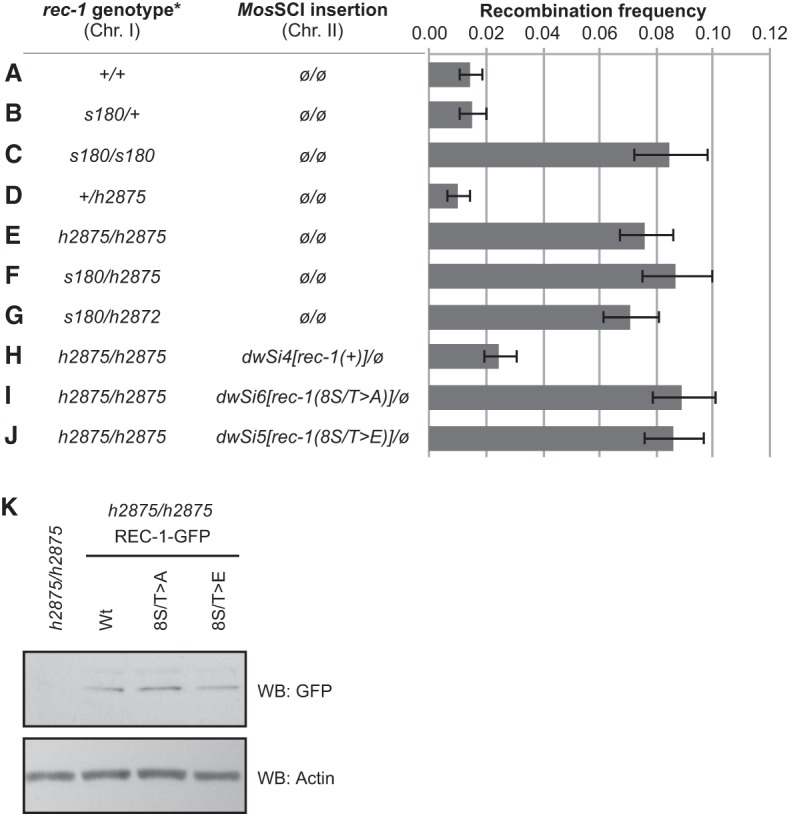Figure 2.

Mutations in rec-1 cause an increased recombination frequency in the dpy-5–unc-13 genetic interval. (A–C) The s180 allele of rec-1 confers a recessive increase of recombination frequency in this interval. (D,E) The h2875 allele of y18h1a.7 also confers a recessive increase of recombination frequency in this interval. (F,G) The h2875 and h2872 alleles of y18h1a.7 fail to complement rec-1(s180). (H) The reintroduction of wild-type rec-1 by MosSCI reverses this increase in recombination frequency. (I,J) The insertion of rec-1 mutated at putative phosphorylation sites fails to rescue the altered recombination phenotype. See the text for a description of the alleles. (ø) The absence of a Mos-1-mediated transgene insertion. (*) Where applicable, the first allele indicates the homolog bearing the dpy-5 and unc-13 mutations. Error bars indicate the 95% Copper-Pearson confidence interval. (K) C-terminal, GFP-tagged versions of REC-1 expressed from the same integration site as other rec-1 integration alleles were probed. The comparably expressed bands suggest that promoter activity was adequate and that translation products were stable despite replaced S/T residues.
